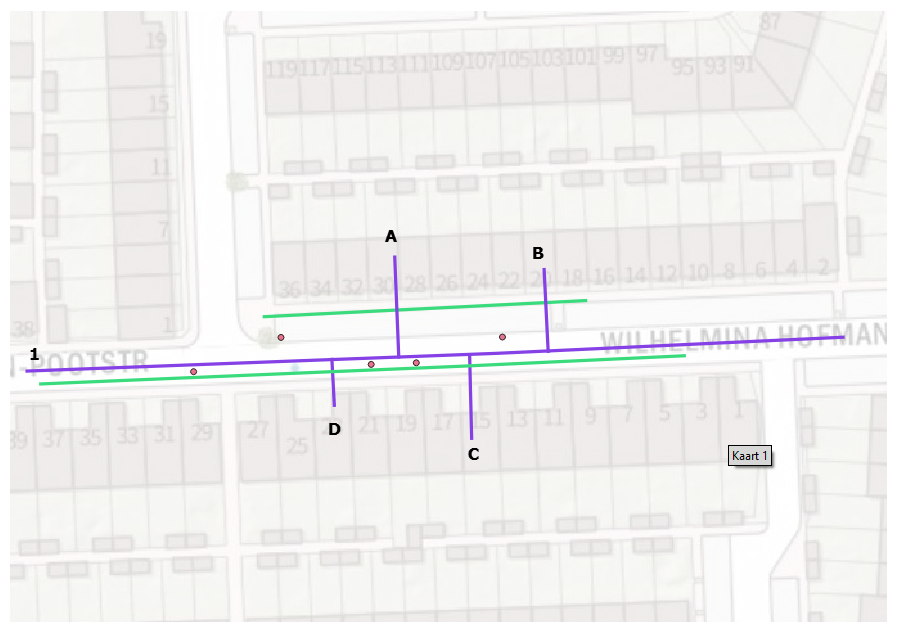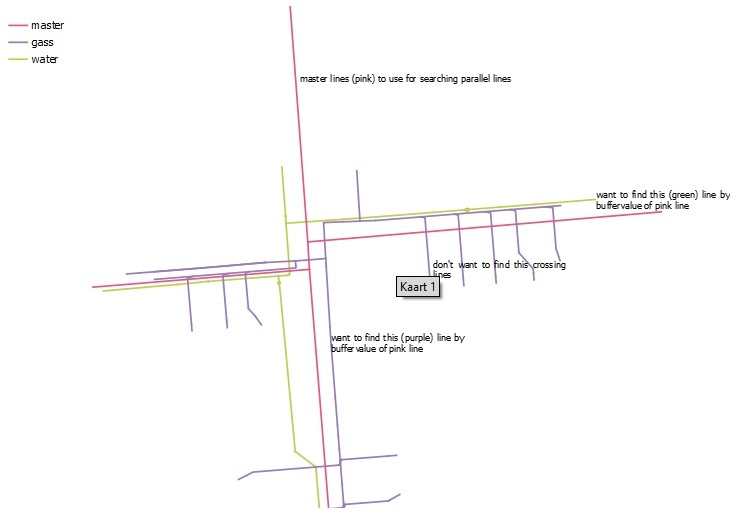
Hello Community,
My goal is to find parallel lines (green) and the dots (5 points) of line (1). Line 1 and A,B,C and D belong to the same type in my dataset. A,B,C and D are almost at an angle of 90 degrees of line 1, sometimes it can even be 45 degrees; it's variable. If I use a bufferer all blue lines are processed. How can I exclude the A,B,C and D lines from processing?
Greetings.










